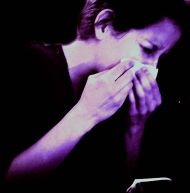Norovirus epidemic in Germany
Fortunately, the influenza virus has not swapped over to Germany yet because the country has enough to do with the norovirus which is expected to attack up to one million people during the next weeks. People affected by the virus suffer from strong nausea and diarrhoea that last at least two days.

In North Rhine-Westphalia, the province with the most inhabitants in Germany, 4,300 diseases were reported in January 2007 compared to 751 cases for the whole country in December 2005. It is expected that the number of persons concerned might increase up to one million by the end of the winter.
The reason for the epidemic increase of the virus is the ability of the pathogen to change its structures which makes it difficult for the immune system to recognize the typical markers and to defeat the virus. Although the virus is not life-threatening in general, it could be dangerous for elderly people. Last year, all nineteen people died in Germany because of the novovirus were older than 70 years.
Until today there is neither a vaccination nor effective pharmaceuticals that could defeat the norovirus and it is therefore highly infectious - especially in public facilities like schools or hospitals.
In this context and to avoid an increase of the infection, hospitals are asked to be extremely fussy with hygiene standards which include to wear mouth-nose-protections and gloves all the time as well as to disinfect all surfaces in critical areas regularly. If possible, patients with a norovirus infection should use a separate toilet.
30.01.2007











